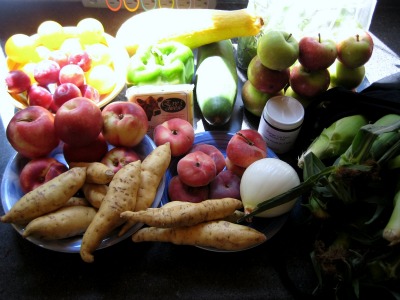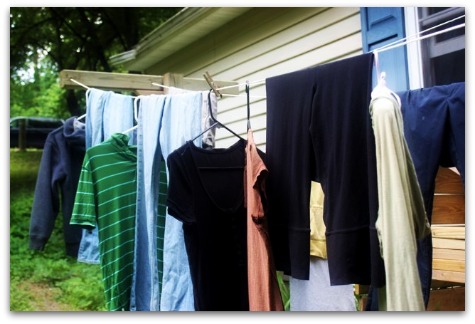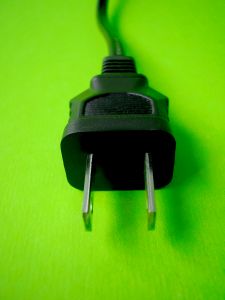
A man is rich in proportion to
the number of things he can afford to let alone.
-Henry David Thoreau
My In-Real-Life buddy Danielle Liss saw Extreme Couponing for the first time last week. (If you haven’t seen it, click on the link and watch some of the clips.) Danielle asked friends from all areas of the blog world to participate in an interview regarding groceries and coupons. I am incapable of refusing such a request, as Danielle owns many many many unflattering photographs of my teen years.
If you want to participate, please feel free to copy the questions. Danielle plans to post a link to all of the answers, so send your link to dsliss [at] gmail [dot] com.
1. Do you use coupons for groceries?
On occasion, but the majority of coupons are for items that just barely qualify as food, let alone good food. In our local paper you’ll periodically see coupons for Seventh Generation, Marcal recycled paper products, Sun & Earth detergents, yeast, Newman’s Own, and I’ll use those.
2. What is the primary source of your coupons?
I get the Sunday edition of the Wilmington News Journal; I follow brands I’m loyal to on FB, Twitter and/or by email and sometimes coupons pop up that way. I also subscribe to Moms Need to Know via RSS and scan Mindi’s grocery store/coupon matchups (local to PA and includes Whole Foods) for anything that looks good; she links you up to the printable coupons. (Mindi, you need an organic category for people coming to the site for the first time.)
3. Have you ever purchased food that you would not normally eat because you have a coupon? Remember any examples?
Have I ever? Suuuure. I went through a period of intense frugality when I wouldn’t buy anything without a coupon, and also bought things simply because they were such a good deal with the coupon.
One would think I’d have been introduced to a lot of great new brands that way, but I honestly can’t think of a time when that happened even once. Today, I won’t even look twice at a coupon unless it’s something I plan to buy anyway.
4. When you grocery shop, what are the most important factors in your food choices?
Is this real food? Is it packed with preservatives, HFCS, food coloring, sugar? Does it involve an unconscionable amount of packaging? Can I recycle the packaging? Is it organic?
Is it going to make me feel bad about myself, on an ethical level for buying it, on a parenting level for feeding it to my kids, on a personal level if I eat it myself and it makes me feel ill?
5. Do you use reusable bags? Why or why not?
I do, but not as often as I should (i.e. every time). I am really bad about forgetting them lately.
I do recycle the plastic ones we use (cat litter can or return to store) and the paper ones (hold paper recycling). Plastic never goes away, it just breaks down into itty-bitty pieces, winding up contaminating our soil and water and working its way up the food chain.
6. If you had a coupon, would you purchase a stockpile of items because of the deal?
No. I might buy two.
Expiration dates sneak up on you more quickly than you expect, people eat more when there’s more to eat, we lose power on a regular basis out here in the boonies and things spoil. Stockpiling is a good way to waste food, in my opinion. And clutter in your house keeps the good energy from moving around, that’s bad feng shui. (I’m not sure if I’m kidding about that or not.)
7. Do you plan your meals in advance? What do you base your meal plan on?
I loosely plot out seven dinners. Some weeks I get more organized and plan the meals so that the leftovers factor into later dinners. My family is really literal so if I commit the meal plan to paper or internet, I’m locked in.
The meal plan reflects what’s in season at the farmer’s market, or what was on sale at the store that week. It has to fit our schedule (crockpot meals on nights when it’s my turn to take a kid to soccer practice, etc). Since I pay more for free-range and organic, it’s really important that everything gets eaten. I hate to waste food or money.
8. Have you ever tried to coupon to get items for free or close to nothing? How did it go? Do you still coupon?
Band-aids (we go through a lot of bandages, we are hands-on-yet-clumsy folk) occasionally go on sale for a dollar a box, so with a doubled coupon you get it for free. Ditto for Pringles, or Kool-Aid (yuck) which Jeff likes in his lunches sometimes; I refuse to pay good money for that crap.
9. Last one – What do you blog about? (Or, as we learned in Bloggy Bootcamp, what’s your elevator pitch?)
simple.green.organic.happy. is a series of musings on green living, playful parenting, and the pursuit of happiness. By treading lightly on the earth, raising upstanding human beings, and finding beauty, complexity & happiness in my own backyard, I’m trying to become a better person and leave the world a better place. I hope others may be inspired to join me.
Thrift is not an affair of the pocket, but an affair of character.
-S.W. Straus
A few unsolicited observations:
I don’t have cable, and I haven’t seen Extreme Couponing, but my inexpert opinion is that some people are desperately clinging to a illusion of security and control that is misleading and unhealthy.
It’s one thing to feed your family on $50 a week if that is the very very most you could possibly afford (although even then you’d be better served with some packets of seeds and some careful meal plans; I talked about this in SPAM is not the answer). It’s quite another to spend so little because with enough time and coupons, you can. It’s immensely freeing to give money away, and my experience has been that when you release money “into the wild,” when you let go of some of its power over you: that’s when the universe becomes more generous. I hate to get all New Age-y but I cannot deny the karma.
Also, what extreme couponers are not taking into account is the long-term costs of that kind of diet. **slapping on my Food Police badge and bracing for impact** I am totally behind Jamie Oliver when he says sending a Lunchables into school with your child is a form of child abuse, even if you got it for free. Kids are only capable of eating what we provide for them, and if what we provide is processed, sugar-laden, pesticide-covered, BPA-laced (and contributes to the well-being of factory farms, which comes with its own host of health problems), then we are setting our kids up for a lifetime of improper eating habits. Which we KNOW is not healthy for them. If we KNOWINGLY lay the building blocks for an unhealthy future, that is, at the very least, neglect.
Food is central to our health and well-being and should not be something we pride ourselves in finding bottom-basement prices for. If ever there was a place for quality over quantity: this is it.
Lastly, I can’t get over the business model of printing millions of coupon booklets, which only a small percentage of people actually clip, and I would guess most of those clipped coupons expire before they are redeemed. Why can’t we put a better e-couponing system into place?
If you have opinions about coupons please play along, ’cause Danielle is my friend & I like her.
——————————————————————————-



